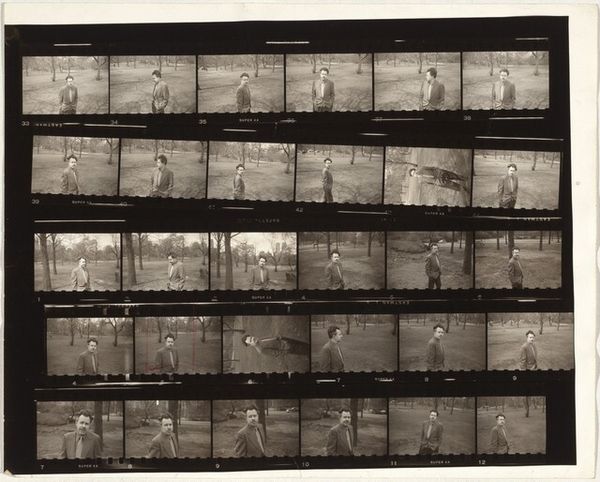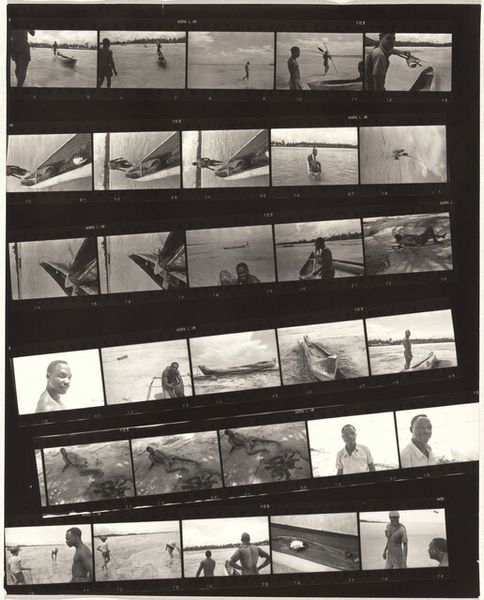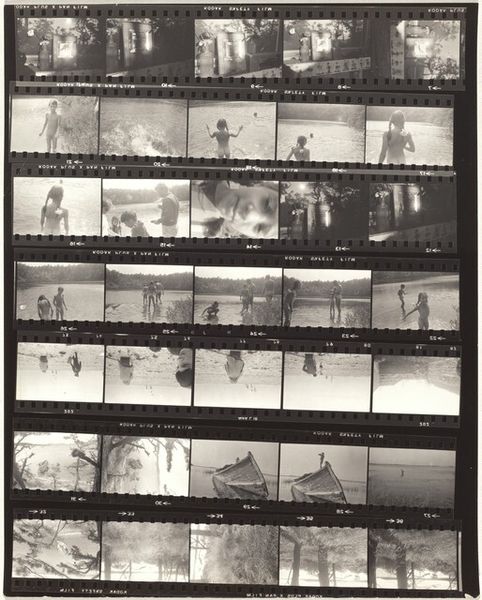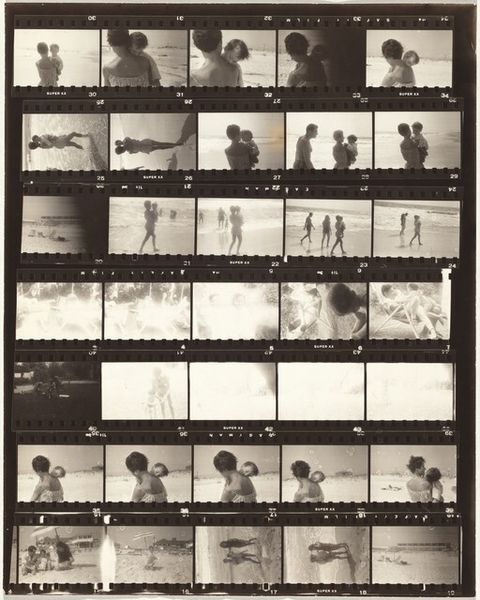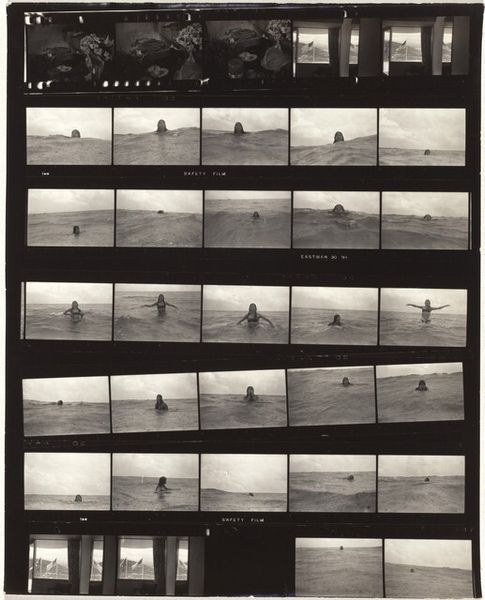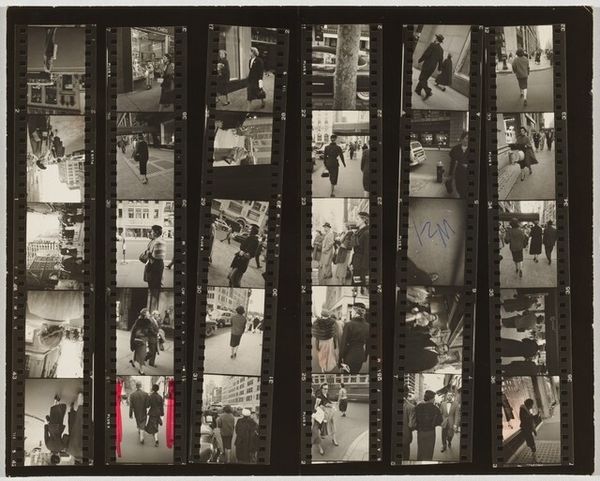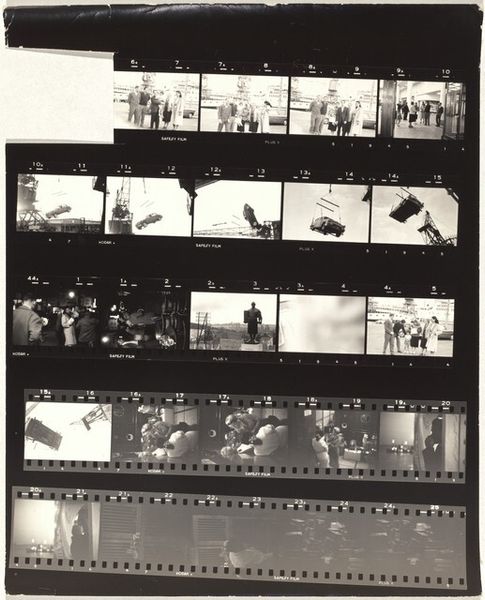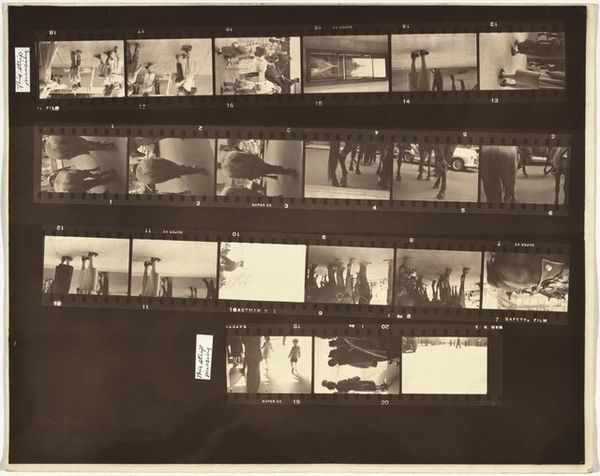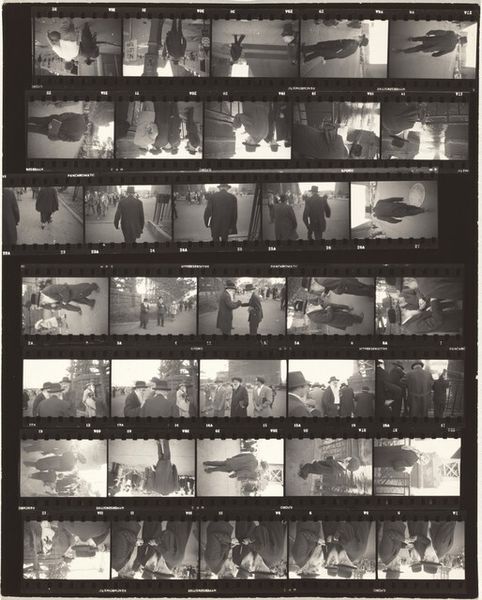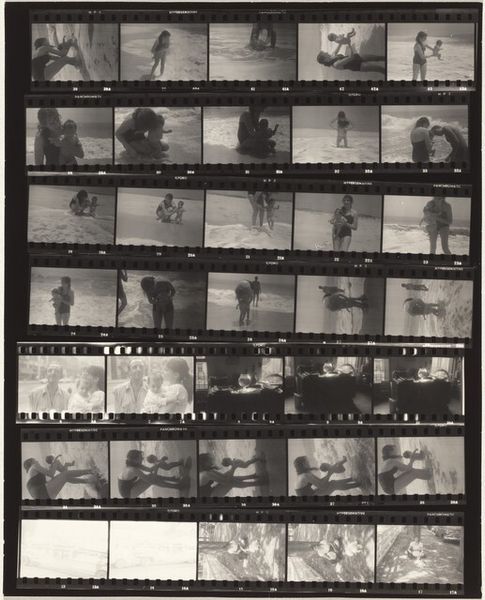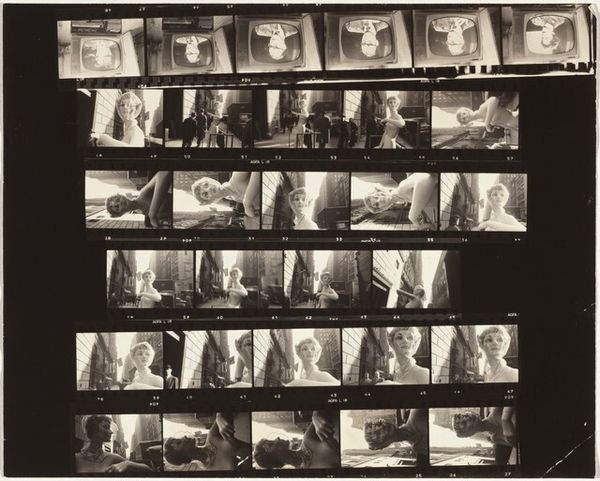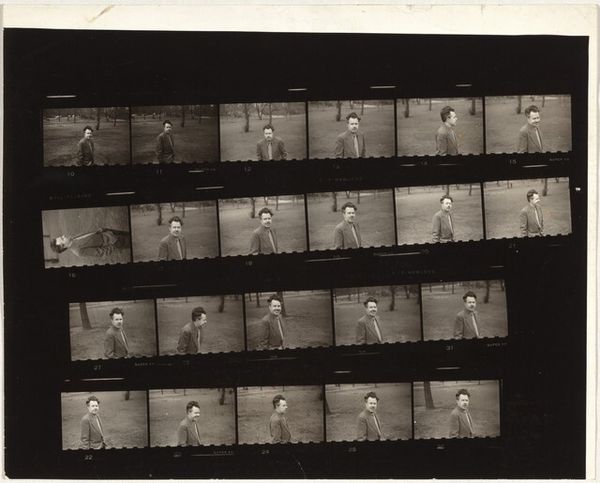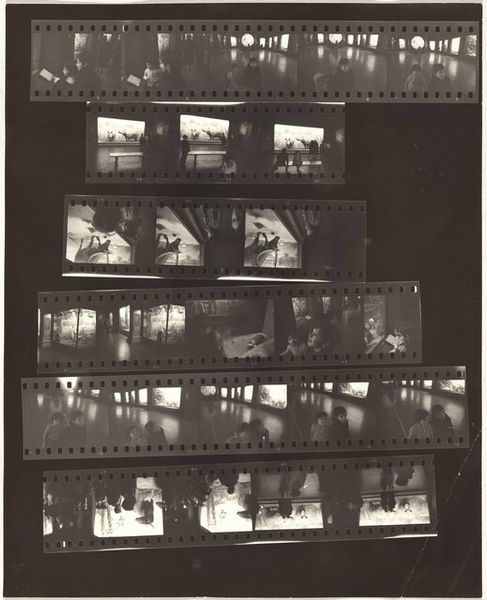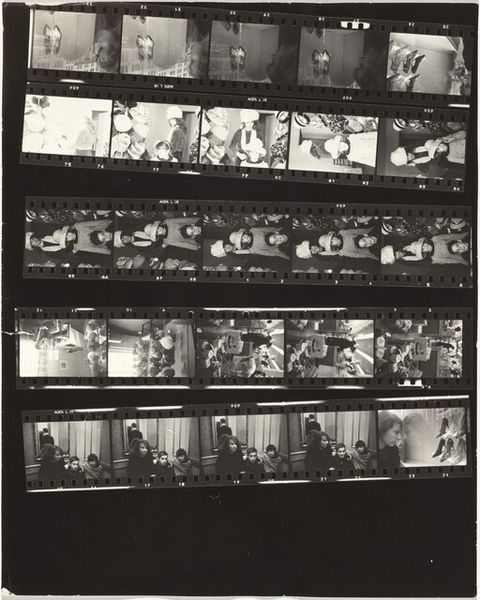
Robert and Mary Frank--Harper's Bazaar studio, 57th Street c. 1950
0:00
0:00
photography
#
portrait
#
street-photography
#
photography
#
historical fashion
#
photojournalism
#
group-portraits
#
modernism
Dimensions: sheet: 20.3 x 25.2 cm (8 x 9 15/16 in.)
Copyright: National Gallery of Art: CC0 1.0
Curator: This is "Robert and Mary Frank--Harper's Bazaar studio, 57th Street," a gelatin silver print by Robert Frank, created around 1950. The presentation itself is immediately striking— a twelve-panel grid. What's your first impression? Editor: Austere, definitely. The uniformity and muted palette feel very deliberate, even distancing. Are these variations on a theme, or is there something deeper going on? Curator: Formally, I see a rigorous engagement with space and repetition. The grid segments create individual picture planes, with the highly reflective floors extending them toward the viewer in the composition. Note also the stark contrast between the light, nearly blank walls, and the dark attire of the figures. Editor: Clothing choices matter. The dancers’ dark colors are classic emblems for art world subcultures—dignified yet subversive. Each of the twelve ‘frames’ captures a fragment of what feels like a performance or rehearsal. What narratives are the characters acting out? Curator: You point to some rich avenues of cultural consideration, but do not forget that, first and foremost, this is a carefully structured photographic composition, built upon layers of tonality and formal geometries that play the figures within the scene against an increasingly modern sensibility, particularly as it applies to a dancer. The choice of a silver gelatin print as material enhances the subtleties within these tones. Editor: Right, the dancer. It hits a different chord: images of movement and stillness alternate within these frames. They carry familiar symbolic associations. We know the pose: the outstretched arms and legs, suggestive of aspirations toward something loftier. Curator: Aspirations manifest via dynamic formal configurations— lines bisect planes; and this effect only works if the composition has a core structural and geometric order to begin with. Editor: Agreed, this structure echoes not only Frank's sensibility, but that of the broader cultural landscape of 1950s New York—cool, collected, and full of unspoken codes. The work invites a reading of that era as simultaneously repressed and yearning to break free. Curator: A crucial aspect, I would argue, centers around the meticulous compositional elements rather than the immediate symbols suggested. Editor: Fair point, both operate in tandem here to convey what feels deeply relevant. I leave this viewing thinking about my interpretation of what Frank created from these formal aspects.
Comments
No comments
Be the first to comment and join the conversation on the ultimate creative platform.
